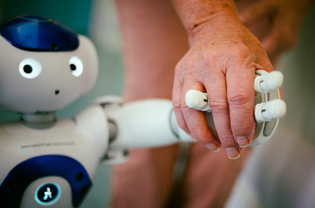|
One issue that we’re facing right now is the aging crisis, where the elderly population is skyrocketing while mothers are having less and less children, partly due to industrialization. The World Health Organization conducted a study in 2015 dealing with population growth. Between 2015 and 2050, the proportion of the world's population aged over 60 years will nearly double from 12% to 22% (World Health Organization). With the rising aging population will come the increased importance of efficient healthcare systems and diagnoses in order to address the increased number of patients. However, not only are mothers having less children, but our healthcare system is becoming less able to support the influx of patients. According to the American Association of Medical Colleges, there will be a shortage in the US of between 40,000-108,000 physicians (AAMC 2018). Nurses, who are already overwhelmed with the large amount of tasks they must complete on a daily basis, will need assistance as the number of patients grow. But that’s where AI comes in.
Nurses will receive the assistance they need. A lot of the logging tasks that they must complete can now be fulfilled by robots, allowing them to spend more time on more important and less mechanical problems.
Moreover, a lot of the healthcare improvements discussed in our last blog post, like improved detection of diseases, will play a crucial role in developing an efficient, end-to-end pipeline for elderly patients. Artificial intelligence is revolutionizing the treatment for the aging crisis, and it’s important we work to improve AI technologies and optimize them for the future.
0 Comments
|
ArchivesCategories |



 RSS Feed
RSS Feed
